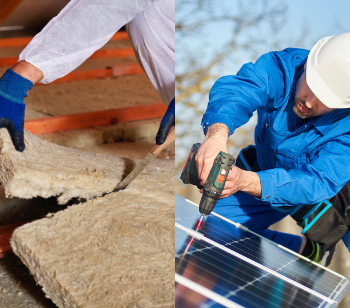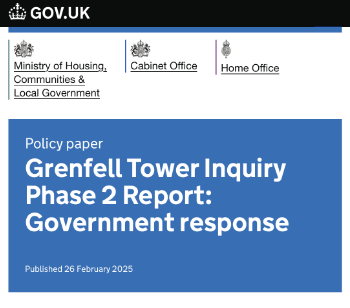Building engineering business survey Q1 2022
Contents |
[edit] Introduction
The latest sector-wide Building Engineering Business Survey, sponsored by Scolmore, shows that while order books continue to grow following the pandemic, a lack of skilled electrical personnel is hurting electrotechnical contracting businesses. As a result, businesses seem to be hiring more apprentices than ever.
[edit] Survey results
Just under half (47 per cent) of respondents to the quarterly survey, which includes data from industry trade bodies ECA, BESA, SELECT and SNIPEF, said that ‘attracting the right calibre of people to the business’ was their biggest worry. Forty-one per cent said their top concern this quarter was to ‘retain existing staff’.
However, apprentice employment rates show signs of improvement, with 61 per cent of respondents saying they expect to employ the same number or more apprentices in Q1 2022 than in Q4 2021.
Total employment has also increased – 83 per cent of survey respondents said they expected to hire the same number or more direct employees in Q1 2022 compared to Q4 2021.
ECA Director of Workforce and Public Affairs Andrew Eldred said: “We have seen record levels of apprentice recruitment this year so far. While skilled personnel might still be in short supply, it is promising to see so many firms picking up the baton. We still have some way to go to reach the apprentice recruitment levels of our counterparts in Europe, but the right course is being set for the UK to develop a flexible and competent electrical workforce in sufficient numbers to meet growing demand and ultimately help deliver Net Zero on time.”
Alan Wilson, Managing Director of SELECT, said: “The skills shortage is an ongoing issue that SELECT and its partner organisations the Scottish Joint Industry Board (SJIB) and Scottish Electrical Charitable Training Trust (SECTT) are committed to tackling. One positive sign is the number of new electrical apprentices and adult trainees taken on in Scotland in 2021. More than 800 new learners enrolled on the Electrical Apprenticeship and Adult Trainee Programmes - the highest figures for 12 years. This shows that people recognise that the future is electric and want to be part of a sector that will play a key part in all our lives.”
Most respondents (88 per cent) expect their business’ turnover for Q1 2022 to be the same or higher than the same time last year, at the height of the coronavirus pandemic.
Almost 7 in 10 (69 per cent) of respondents said their turnover stayed the same or increased in Q4 2021 compared to the previous quarter. Eight in 10 (80 per cent) expect turnover to stay the same or increase for Q1 2022.
Despite this uptick in turnover, exactly a quarter (25 per cent) of respondents highlighted the ability to forecast inflation as their biggest concern.
One respondent said, “All our time is being spent trying to calculate how much worse off we are and trying to ask for higher rates rather than looking for new work.” Nearly half (46 per cent) of respondents said they currently have vacancies in their organisation that they are struggling to fill.
[edit] Survey open dates and respondents
The survey received 237 responses from companies across the multi-billion-pound building engineering services industry, mainly regarding their performance in Q4 2021 (1 October to 31 December 2021), and expectations for Q1 2022 and beyond. Responses were collected from 24 January to 11 February 2022.
[edit] The engineering services sector
Overall, the engineering services sector is estimated to account for some 40 per cent of UK construction and maintenance turnover.
ECA, BESA, SNIPEF and SELECT represent over 5,000 businesses across the entire UK, covering England, Scotland, Wales and Northern Ireland. Member businesses have a combined annual turnover of £12 billion, spanning building, infrastructure and maintenance activity.
The four trade bodies cover a broad range of engineering, design, installation and facilities management activity, including electrical, heating, plumbing, energy management, micro-generation, ductwork, ventilation, fire and security, and wireless systems.
About Scolmore: https://www.scolmore.com//about-scolmore/
This article was originally published on the ECA website on 24 February 2022.
--ECA
[edit] Related articles on Designing Buildings
Featured articles and news
Microcosm of biodiversity in balconies and containers
How minor design adaptations for considerable biodiversity benefit.
CIOB student competitive construction challenge Ireland
Inspiring a new wave of Irish construction professionals.
Challenges of the net zero transition in Scotland
Skills shortage and ageing workforce hampering Scottish transition to net zero.
Private rental sector, living standards and fuel poverty
Report from the NRH in partnership with Impact on Urban Health.
.Cold chain condensing units market update
Tracking the evolution of commercial refrigeration unit markets.
Attending a conservation training course, personal account
The benefits of further learning for professsionals.
Restoring Alexander Pope's grotto
The only surviving part of his villa in Twickenham.
International Women's Day 8 March, 2025
Accelerating Action for For ALL Women and Girls: Rights. Equality. Empowerment.
Lack of construction careers advice threatens housing targets
CIOB warning on Government plans to accelerate housebuilding and development.
Shelter from the storm in Ukraine
Ukraine’s architects paving the path to recovery.
BSRIA market intelligence division key appointment
Lisa Wiltshire to lead rapidly growing Market Intelligence division.
A blueprint for construction’s sustainability efforts
Practical steps to achieve the United Nations Sustainable Development Goals.
Timber in Construction Roadmap
Ambitious plans from the Government to increase the use of timber in construction.
ECA digital series unveils road to net-zero.
Retrofit and Decarbonisation framework N9 launched
Aligned with LHCPG social value strategy and the Gold Standard.
Competence framework for sustainability
In the built environment launched by CIC and the Edge.
Institute of Roofing members welcomed into CIOB
IoR members transition to CIOB membership based on individual expertise and qualifications.
Join the Building Safety Linkedin group to stay up-to-date and join the debate.
Government responds to the final Grenfell Inquiry report
A with a brief summary with reactions to their response.



























